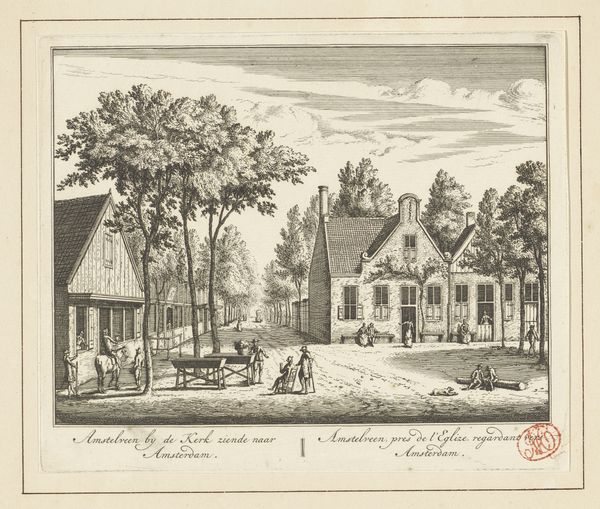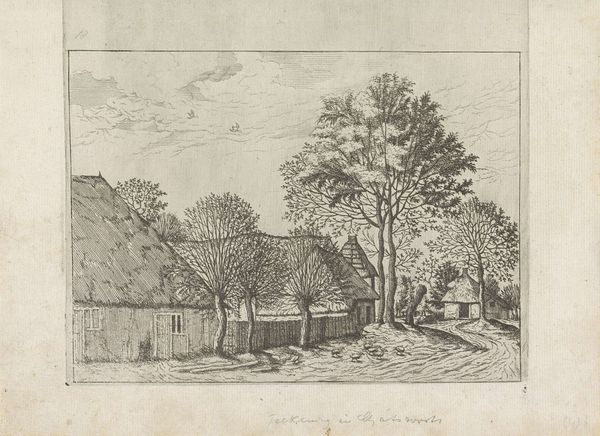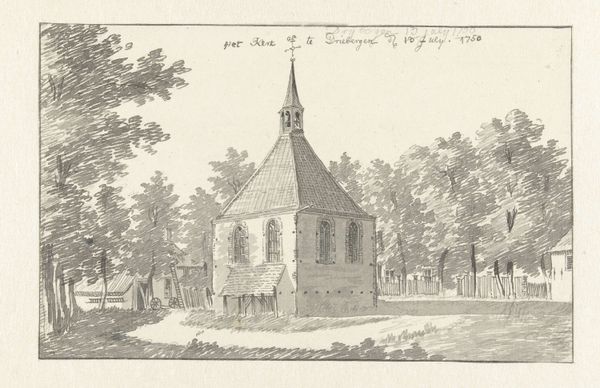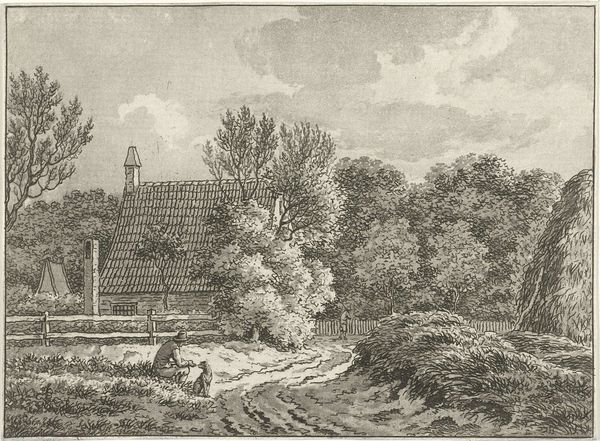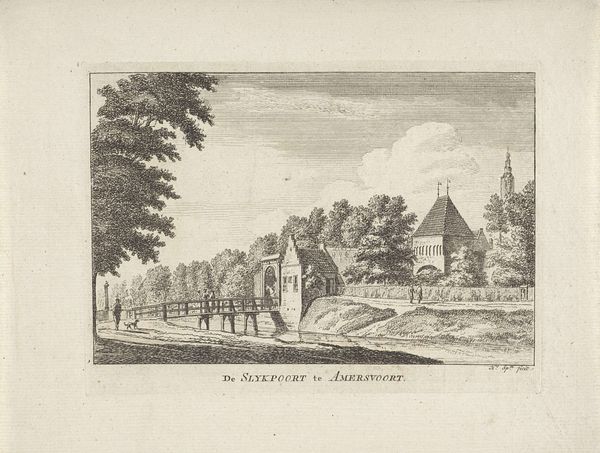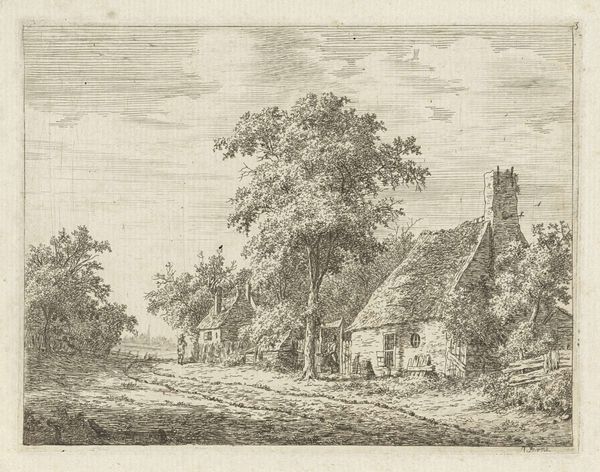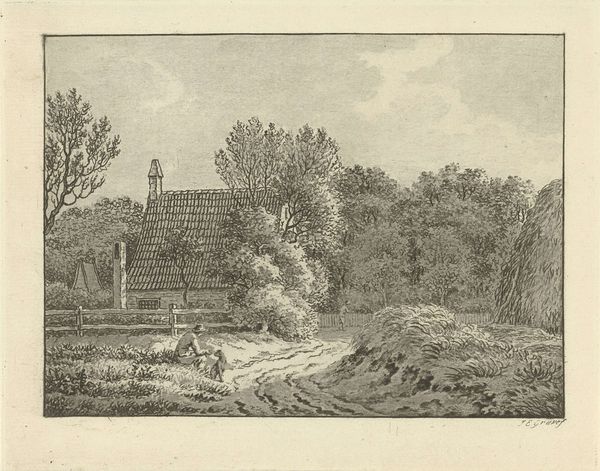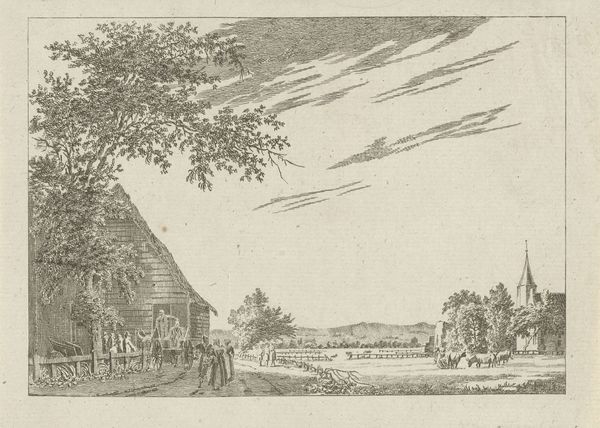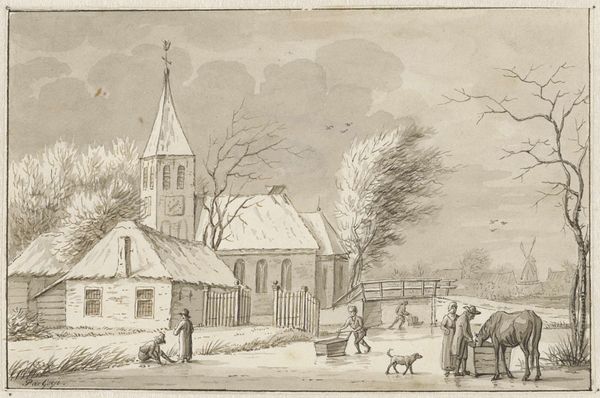
drawing, print, etching
#
drawing
#
baroque
# print
#
etching
#
old engraving style
#
landscape
Dimensions: height 103 mm, width 162 mm
Copyright: Rijks Museum: Open Domain
Editor: Here we have Jan de Beijer's "De kerk van Helsdingen bij Vianen," dating from around 1750 to 1758, rendered in etching and drawing, currently residing at the Rijksmuseum. It’s a rather serene depiction of a rural church. What structural elements strike you the most in this work? Curator: Initially, the linear precision of the etching compels attention. The rigorous arrangement of forms—the cubic mass of the church, the diagonal thrust of the roof, and the surrounding trees—reveals a deliberate compositional strategy. Notice how the artist employs line weight and density to create a sense of depth, moving the eye through the landscape. Editor: So, you’re primarily drawn to the compositional aspects of the artwork. How does that inform your overall understanding? Curator: Indeed. The calculated perspective, guiding the viewer from the foreground figure with the dog towards the church and then further into the background, constructs a visual narrative. I find the subtle gradations of light and shadow crucial. Consider how the artist uses shading to define the volumes of the trees and the church, thus establishing spatial relationships within the composition. Are you drawn to that contrast? Editor: I noticed that but hadn't given it much thought. I guess I saw it more as just part of the rendering. The contrast helps create the shape. Curator: Precisely. The formal elements aren’t merely decorative; they’re integral to conveying a structured reality. The composition offers an engaging interplay of light and form. It reveals a meticulously constructed scene that emphasizes the formal language over a contextual narrative. Editor: That’s really interesting; I will definitely look more carefully at the image again with that in mind. Thanks. Curator: You're welcome. Looking closer allows a richer understanding of an artwork's underlying structure.
Comments
No comments
Be the first to comment and join the conversation on the ultimate creative platform.

